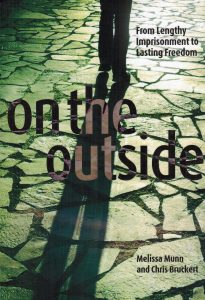Twenty-six percent of all new federal prisoners have already served time, which begs the question: Whatever happened to the other 74 percent who served time and never returned? On The Outside looks for answers. The result is fresh and compelling research on life after prison.
The authors interview longtime inmates including those jailed for serious violent crimes that once earned the death penalty. One hides his past from his children and “aspires to a simple life filled with laughter.” Another complains he must learn how to buy groceries: “People have been cooking my meals for twenty-two years and all of a sudden I gotta cook my breakfast.” A third ex-convict is upset by the loss of civility in polite society: “Personal rudeness in the prison system is not tolerated under any circumstances, at least in the old days when I was there.”
On The Outside is no celebration of rehabilitation. Former inmates interviewed by the authors appear broken men, some guilt-ridden, some unapologetic. “The quest for normalcy was a preoccupation,” write the authors, former members of a prisoners’ liaison group at Collins Bay Penitentiary in Kingston, Ont.
Melissa Munn is a professor of sociology at Okanagan College, Chris Bruckert is a professor at the University of Ottawa’s Department of Criminology. Together they interview twenty ex-convicts. “We had come to know the men as individuals.”
The authors do not detail the men’s crimes and interestingly neither do most employers or acquaintances. One parolee says he was fired from a jobsite after a supervisor spotted his gang tattoo. However another recounts his experience in applying for a credit card at the bank: “I was very nervous because I didn’t want to reveal my past and she asked me my particular information and she checked my credit rating and she said, ‘You don’t have a credit rating.’ So I had to tell her where I was. And her comment to me was, ‘Well, banking’s our business, that’s your business.’ And I really appreciated it. I never forgot that comment.”
Common themes emerge. All the released prisoners had bad childhoods, most came out of prison to work at entry-level jobs as janitors, lawn cutters, 7-Eleven clerks. None returned to their hometowns, and all considered incarceration the most important event in their lives. “It isn’t helpful being locked up every friggin’ day,” says one convicted murderer. “I mean, the whole atmosphere is not helpful.”
Yet On The Outside is no lament. If ex-convicts appear as sympathetic figures, it is only because readers are hearing their voices for the first time, like the man who refuses to wear black as reminiscent of his past as a biker, or the freed prisoner whose life turns after he buys a little house: “It puts you in a different class of people automatically.”
Or the man who recalls with dread the night he walked home after dark. “I haven’t been out at night when it’s dark for a long time”; “This kid walks up and taps me on the shoulder. I said, ‘Oh, gosh, lucky one of us didn’t die,’ because I almost had a heart attack and I was going to kill him because I don’t know who he was. All he wanted was a dollar”; “I had never been out at night and I never had anybody come up behind me and put their hand on my shoulder.”
By Holly Doan
On The Outside: From Lengthy Imprisonment To Lasting Freedom, by Melissa Munn & Chris Bruckert; UBC Press; 240 pages; ISBN 9780-7748-25375; $29.95






